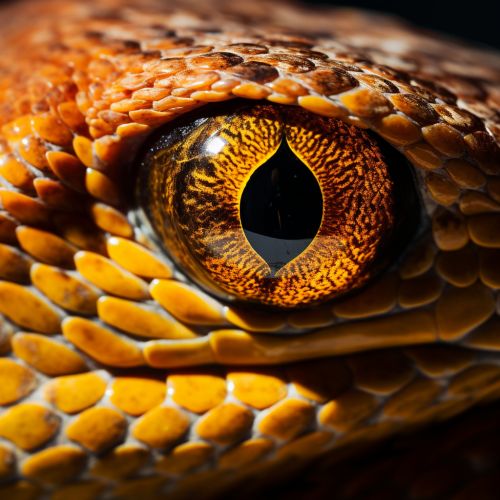Colubridae
Introduction
The Colubridae are a family of snakes that includes the majority of snake species on earth. With over 1,800 species, they are the largest snake family and are found on every continent except Antarctica. The family is characterized by a wide diversity in terms of size, habitat, and diet.
Taxonomy and Evolution
The family Colubridae is divided into several subfamilies, including Colubrinae, Natricinae, Dipsadinae, and others. The taxonomy of this family has been a subject of ongoing research and revision, with many species being moved between different genera and subfamilies as new genetic and morphological data become available. The evolution of the Colubridae is believed to have begun in the Cretaceous period, with the family reaching its greatest diversity in the Miocene era.
Morphology
Colubrids vary greatly in size and shape, ranging from small, slender species such as the vine snakes (genus Ahaetulla) to large and robust species like the rat snakes (genus Pituophis). They have a wide range of colors and patterns, which are often used for camouflage or warning signals. Most colubrids have a pair of rear fangs, which are used to deliver venom in some species.


Behavior and Ecology
Colubrids inhabit a wide range of environments, from deserts and grasslands to forests and wetlands. They are primarily terrestrial, but some species are semi-aquatic or arboreal. Most colubrids are active during the day (diurnal), but there are also many nocturnal species. They have a variety of hunting strategies, with some species actively pursuing their prey and others using ambush tactics.
Diet
The diet of colubrids is diverse and includes a wide range of prey items. Many species are generalist predators, feeding on a variety of small animals such as rodents, birds, frogs, and other snakes. Some colubrids have more specialized diets, such as the egg-eating snakes (genus Dasypeltis) that feed exclusively on bird eggs.
Reproduction
Most colubrids are oviparous, laying eggs that are incubated in the environment. Some species are ovoviviparous, carrying the eggs inside their body until they are ready to hatch. The number of eggs laid varies widely among species, with some laying only a few eggs and others laying dozens at a time. In most species, the female does not provide any parental care after laying the eggs.
Human Interaction
Colubrids are often encountered by humans due to their wide distribution and diverse habitats. While many species are harmless, some can deliver a painful bite and a few are capable of causing serious harm with their venom. However, colubrids also play a beneficial role by controlling pest populations. Some species are popular in the pet trade, while others are threatened by habitat loss and overcollection.
Conservation
Many colubrid species are currently threatened by habitat loss, climate change, and human persecution. Some species are also affected by the pet trade, with large numbers being captured and sold each year. Conservation efforts for colubrids include habitat protection, regulation of the pet trade, and public education about the ecological role of snakes.
